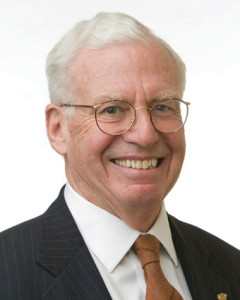 David Kirk, Kirk & Co.
David Kirk, Kirk & Co.The extraordinary volatility in the securities markets has caused an imperceptible pause in commercial real estate property and capital markets. As of market close January 21, 2016, the securities markets recorded a full correction (decline of at least 10%) in the S & P of 11.5% since December 29, 2015, and 9.9% since January 1, 2016. Much of the gyration is attributed to slowing economic growth rate in China and precipitous drop in oil prices. Of course, the market action is complicated. Some pundits feel this January market activity is misguided and overrated. Some feel China is worse off than data indicates. Domestic property capital markets set records in volumes and pricing in 2015, and most feel 2016 will be more tempered. In the January Federal Open Markets Committee (FOMC), the FOMC could well pause in thinking rate increases. No forecast or press release is scheduled for the FOMC January meeting.
At a Capital Markets Summit sponsored by New England Real Estate Journal on January 21, 2016, panelists were prepared to lend and invest in commercial real estate in 2016. Panels focused on commercial banking, capital solutions for Boston deals, capital deal flow in metro Boston, and investor equity and the new capital stack. All panels were prepared to make deals in today’s market and were optimistic for 2016. The volatility was not ignored; most looked beyond current conditions in the securities market referencing local and national economic fundamentals. A few sidebars however included expectations that consolidation and marginal contraction in activity would probably continue in CMBS market where risk adjustments in fixed rate investments are occurring.
Massachusetts recorded the highest annual job gains in 2015 since the dot.com boom 15 years ago. The state added 7,100 jobs in December totaling 74,000 for the year before adjustments as reported January 21, 2016 by the by the state Executive Office of Labor and Workforce Development. The state unemployment rate remained at 4.7% for December, just above the prerecession rate of 4.6%. Commenting on the December report, Northeastern University economics professor Alan Clayton-Matthews called 2015 a great year for job growth for Massachusetts and said 2016 is likely to record reduced growth in the state.
Boston Fed president Eric Rosengren in an interview with Boston Globe on Friday January 14, 2016 identified the strengths of the Boston First Fed District and the major economic risk - the global economy. Rosengren highlighted state unemployment rate, an influx of young workers into the Boston labor market and the construction cranes dotting the Boston skyline. Rosengren has led the Boston Fed since 2007 and will join the rate setting FOMC as a voting member this year. He said policy makers (FOMC) will watch data closely as they determine if, when, and by how much to raise short term interest rates. He offered that there is a lot of optimism and the economy in the Greater Boston area looks very favorable. Other New England states are also faring well based on unemployment: New Hampshire - 3.8%; Vermont - 3.6%; Maine - 4.7%; Connecticut - 5.1%; Rhode Island - 5.2%. Rosengren underlined local housing and other costs as the biggest challenges to the Greater Boston and Massachusetts economy. Federal Reserve officials are also watching the run-up in local commercial real estate prices.
Cheap oil and lagging China economic growth are the biggest global risks. Each has ripples to the domestic, regional and local economies depending on the respective economic bases, all of which are vulnerable to broader, deeper traumas. As the world’s richest business leaders and political figures met at the Davos World Economic Forum, the concern for the global economy resonated and some such George Soros likened today to 2008. The Economist called the gathering a picnic for the bears. Gloom from fears of recession and deflation was widespread. The turbulence in the fixed rate markets, particularly high yield, has surfaced credit crunch talk. The anxiety about further Fed rate moves was prevalent even though the first increase last year received positive technical review. The current volatility does appear to justify increased caution for 2016 and such caution has already caused a pause if not a California roll!
The macro economic landscape is broadly positive and outlook is for sustainable moderate growth. Tightening up for more opportunities in commercial real estate translates into liquidity. With liquidity, one can be nimble to exploit more opportunities in commercial real estate. 2016 will be marginally different than 2015 with more excitement. Happy New Year and best wishes for a happy, healthy and prosperous New Year.
David Kirk, CRE, MAI, FRICS is principal and founder of Kirk & Company, Real Estate Counselors of Boston.








